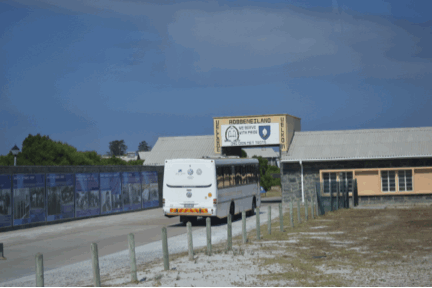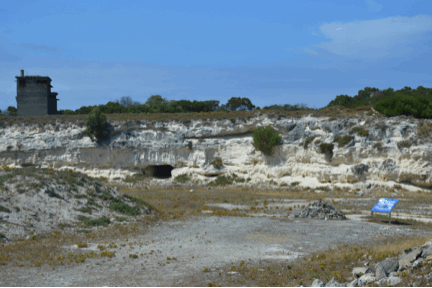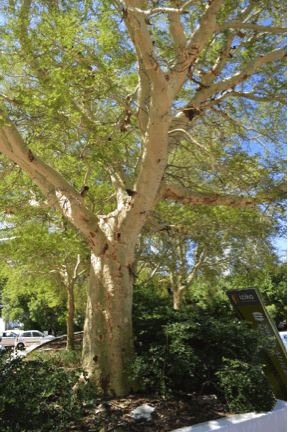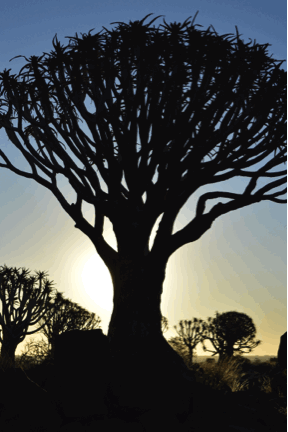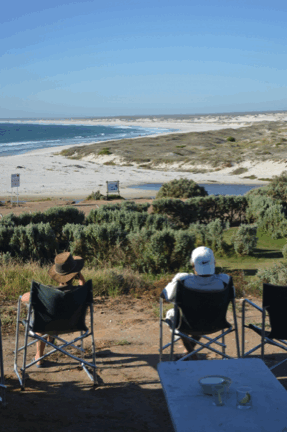Robben Island
Up to now, I have
not written much or anything about the politics here in South Africa. And I
won’t, except for this one post about Robben Island. I was pretty ignorant
about what Robben Island represented, as I have not yet finished reading Nelson
Mandela’s autobiography. My mom really wanted to go, and by then I did as well.
Robben Island is
the prison where Nelson Mandela spent 18 years of his total 27 years
imprisonment. It is the place where only black, male, political prisoners were
kept. The tour starts in Cape Town at the Waterfront, we take a ferry ride to
the island, which is 11 km away. It so happens that we are on the actual ferry
that used to transport the prisoners, there used to be a cell below deck up
front. (It cannot be seen anymore, we were just told about it)
Once there, the group gets divided into two,
we first go on a bus tour around the island. Before the island became a prison,
it was used to banish lepers. We stop at several spots along the way, the most
important one being the quarry where Nelson Mandela and others had to do hard
labour. Everyday, for 8 hours, they had to dig in that quarry. On day one, they
moved the rocks from the left to the right, the next day from the right to the
left. Guards watched them, with pit bulls at their sides. There was no real use
for the rocks, it was just punishment. Also, the dust from the limestone, the
heat and the brightness of the African sun, really was very bad on the human
eye, and caused much damage. That’s why Nelson Mandela had to have eye surgery
after his release and he often wore sunglasses. Of course when they were in
prison, they were not given sunglasses, and that was done on purpose, too.
After Nelson Mandela and the other political prisoners got released in February
of 1990 (about 1100 ex prisoners), they got together at the quarry to
commemorate. Nelson Mandela stood there in silence, eventually he bent down,
picked up a rock, walked to the center of the quarry, put the rock down. Also
silence, all the other ex-prisoners did the same. They promised each other, to
get together every 5 years and to repeat this ceremony until the very last of
the political prisoners has passed away. You can see the pile of stones in the
picture I will post.
After the bus
tour, we went to the prison building. We were greeted by an actual ex-political
prisoner. There are 16 of them still living on the island, doing tours, and it
was very touching. We got to sit in one of the common rooms which used to hold
around 50 prisoners. He spoke for a long time, and then we could ask questions.
As he was explaining life on robben island, not all eyes remained dry, that’s
for sure. In the end, someone asked why he was still here, doing these tours,
within the walls that kept him locked up for so long. I believe that his wish
is for us to remember and to spread the word, so as to not forget. I hope I
helped him just a little bit, why don’t you read up and do the same?
Actual ferry they used to transport the prisoners to Robben Island with ...
First glimpse of Robben Island, it took a 50 minute ferry ride to transfer you from beautiful
Waterfront in Cape Town to Robben Island pain and suffering ...
Entrance to the prison buildings...
Limestone quarry Nelson Mandela and others had to work at each and every day. Notice the stone pile at bottom right beside the plaque? That's the one I mentioned above...
This plaque shows what the prisoners were allowed as rations. Not much. There is even a difference between some of the blacks, depending on their tribe, they were given different rations. However, our guide told us, that the prisoners put it all together and shared in it equally.
Here is a picture of our guide, an ex-prisoner. A very inspirational man...
And this is Nelson Mandela's cell. It is very tiny. The dog kennels for the pit bulls are larger...
Let all this be a lesson to us, to treat our fellow human beings with respect and equality. There is much work to be done.


